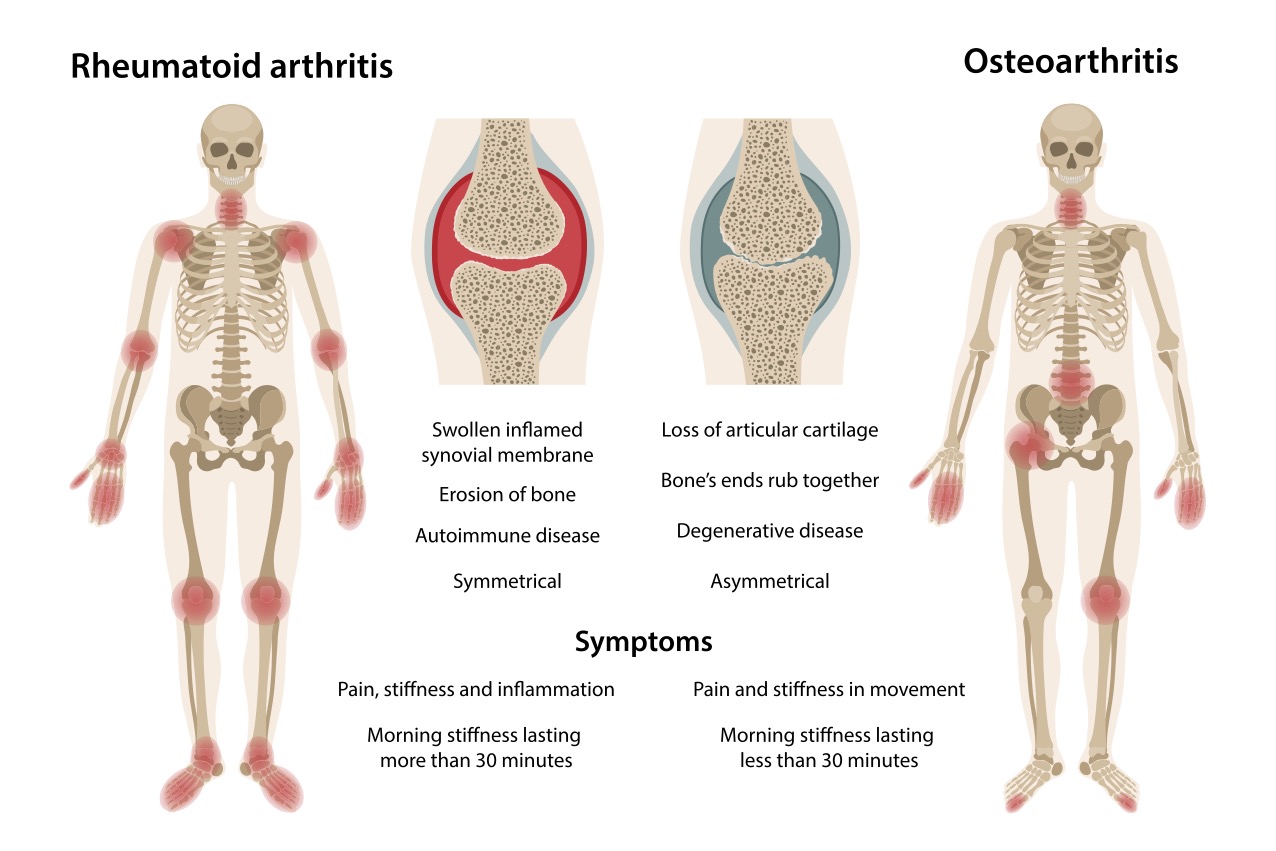What's On This Page?
ToggleNavigating the world of supplements for arthritis can be a maze of conflicting advice, especially when it comes to managing different types of arthritis. Today, we’re going to clear up some confusion surrounding glucosamine and chondroitin, particularly for those of you with Rheumatoid Arthritis (RA) versus Osteoarthritis (OA).
Today, I want to talk about a nuanced topic. How glucosamine and chondroitin impact these types of joint disorders. The two ingredients are not something I put into my Joint Script formula, however, many people rely on them as a staple in the treatment of osteoarthritis.
A lot of people don’t know this but glucosamine is primarily sourced from shellfish shells or produced by fermentation for a vegetarian option, while chondroitin is mostly derived from animal cartilage, with synthetic versions less commonly available. There’s more about this down below but it’s usually casings from shrimp and crab.
Rheumatoid Arthritis vs. Osteoarthritis
Osteoarthritis is characterized by the breakdown of cartilage, hence, supplements that support cartilage health are beneficial. However, Rheumatoid Arthritis is a different beast. It’s an autoimmune disease where the immune system mistakenly attacks the joints. This causes inflammation and damage to the joint tissue, not just the cartilage. Here’s what you need to know:
- Effectiveness: For RA, glucosamine and chondroitin might not be harmful, but they are often less effective because they do not address the inflammation caused by the autoimmune response. They do not impact cytokine levels or antibody formation.
- Safety: These supplements are generally safe and some experts think they are okay to be used by people with RA (without worsening their condition). There is a little debate about that point. However, they should not be relied upon as a primary treatment. Furthermore, these molecules are big and bulky so absorption is limited and gastric-related side effects are abundant.

Alternatives and Complementary Treatments for RA
Since RA involves inflammation, treatments focus on controlling that inflammation and managing immune system activity. Here are some supplements that can complement your RA treatment plan:
- Omega-3 Fatty Acids: Known for their anti-inflammatory properties.
- Turmeric (Curcumin): Has potent anti-inflammatory effects and can reduce joint pain.
- Boswellia Serrata: An herb that inhibits inflammatory chemicals.
- SAMe (S-adenosylmethionine): Has both anti-inflammatory and pain-relieving properties.
Current Pharmacological Advances in RA Treatment
The treatment landscape for RA is evolving rapidly, with several new approaches showing promise:
- Biologic Therapies: These are targeted drugs that specifically block certain pathways involved in the immune response of RA.
- JAK Inhibitors: A newer class of medication that can block specific pathways in the immune system to prevent inflammation. You see TV commercials for these drugs all the time! If you have a few minutes, read my current article, Understanding JAK Inhibitors: Top 10 Natural Alternatives To Medications.
- Physical and Occupational Therapy: Continues to play a crucial role in managing RA, helping maintain joint function and reduce discomfort.

What is Glucosamine and Chondroitin – How is It Made?
Glucosamine and chondroitin are popular supplements used to support joint health and are commonly found in products aimed at treating osteoarthritis. Here’s where they typically come from sea creatures. Let’s get into that.
Glucosamine
Glucosamine is naturally found in the body, synthesized by the synthesis of proteins and lipids, and is a critical component of cartilage. For supplements, glucosamine is generally harvested from:
- Shellfish Shells: Most commercial glucosamine is derived from the shells of shellfish like shrimp, crabs, and lobsters. The shells are rich in glucosamine, making them an ideal inexpensive source. Glucosamine is primarily derived from the exoskeletons of shellfish. The exoskeletons, which are the hard outer structures that provide protection and support to the body of shellfish, are composed largely of chitin. Chitin is a fibrous substance that is a major component of the shells of crustaceans like shrimp, crab, and lobster.
Here’s how the process typically works:
-
- Collection: The exoskeletons are collected as a byproduct from seafood processing plants, where shellfish are processed for food. This recycling of shellfish waste is an efficient use of resources.
- Preparation: The shells of the crabs, lobster and shrimp are cleaned and then ground into a fine powder. This helps in the extraction process.
- Extraction: Chitin from the ground shells undergoes a chemical process in the laboratory to convert it into chitosan. Further chemical treatments convert the chitosan into glucosamine which is sold to consumers.
- Fermentation of Corn or Wheat: For those who are allergic to shellfish or are seeking a vegetarian or vegan option, glucosamine can also be produced through the fermentation of grains like corn or wheat. This process involves fermenting the grain with specific fungi to produce glucosamine. These sources are labeled as “vegetarian” or “vegan” glucosamine on supplements.
This process makes glucosamine a natural product sourced from otherwise discarded parts of shellfish, providing an environmentally friendly way of creating a useful supplement.
Chondroitin
Chondroitin, like glucosamine, is a natural component of human connective tissues found in cartilage and bone. In supplements, chondroitin is usually derived from:
- Animal Cartilage: Most chondroitin supplements are extracted from the cartilage of animals, such as cows, pigs, or sharks. Bovine (cow) cartilage is the most common source, but marine sources like shark cartilage are also used, especially in products marketed as having additional health benefits.
- Synthetic Sources: Although less common, chondroitin can also be manufactured synthetically through a laboratory process. This option is not as prevalent as the animal-derived sources.
Considerations for Use
Some consumers have dietary restrictions or allergies (such as shellfish allergies). For those who prefer not to use animal-derived products, vegetarian and vegan options are available, particularly for glucosamine. Again, this substance is not easily absorbed into the body that’s why it famously causes stomach upset.
Furthermore, it’s essential you check for quality and certification to ensure the supplements are free from contaminants and accurately labeled for dosage and content. This is especially true when choosing products derived from marine animals, as they can sometimes have traces of heavy metals or other ocean-borne contaminants!
Summary
For those dealing with RA, it’s crucial to work closely with your healthcare provider to create a comprehensive treatment plan that may include both traditional medications and supportive supplements. Glucosamine and chondroitin might play a minor role, but they should not be the centerpiece of therapy.
Every person’s journey with RA is unique, and staying informed is your best strategy. Keep learning, keep asking questions, and let’s navigate this path together with both the wisdom of modern medicine and the support of natural remedies.

Suzy Cohen, has been a licensed pharmacist for over 30 years and believes the best approach to chronic illness is a combination of natural medicine and conventional. She founded her own dietary supplement company specializing in custom-formulas, some of which have patents. With a special focus on functional medicine, thyroid health and drug nutrient depletion, Suzy is the author of several related books including Thyroid Healthy, Drug Muggers, Diabetes Without Drugs, and a nationally syndicated column.

